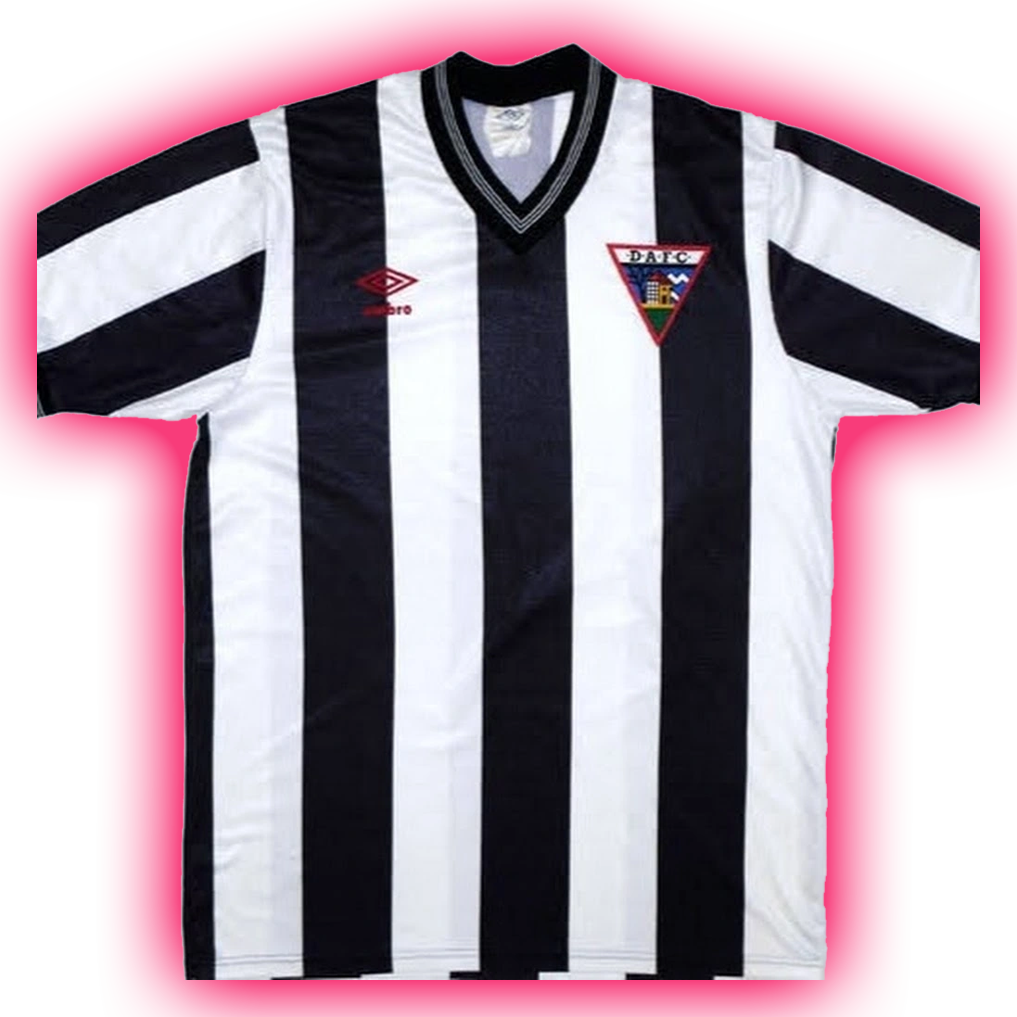Opera back in 2000s.
Compressing webpages, built in mail, built in BitTorrent client, tab stacking, “fit to width” which would remove horizontal scrollbars, page tiling, mouse gestures, rocker gestures, I think it even had a calendar.
It’s a shame the direction Opera took after Jon left, but thankfully he started Vivaldi which feels like the spiritual successor.
Opera also invented the browser Speed Dial, which was super handy back in the day.
But most importantly, Opera invented tabs, or at least the concept of tabbed browsing. I recall using Opera on Windows 3.11 and for the longest time, even during the Win 9x era, no other app used tabs.
In addition to mouse gestures, they had customisable keyboard shortcuts for practically every browser feature, again, something which very few apps bothered with.
The page compression built into Opera Mini was a life saver on Symbian and Windows Mobile devices back in the 2G/GPRS era. Opera Mini loaded pages blindingly quick and there was nothing else like it on the market, even leading up to early Android days.
but thankfully he started Vivaldi which feels like the spiritual successor.
Too bad he made the unfortunate decision of going with the Chromium engine instead of Gecko, or even making their own engine. I would’ve loved to use Vivalidi if it weren’t for that fact.
Opera didn’t actually invent browser tabs. That’s a common misconception.
Tabs was first invented for the browser InternetWorks
Opera also invented full page zooming. Originally, browser zoom would only increase text size - everything else (including images, the actual page layout, etc) would remain the same size. Opera was the first browser to instead zoom into the entire page.
It also had a lot of features that either require extensions or don’t even exist these days. Things like being able to disable JavaScript or change the User-agent per-site, basic content blocking before ad blockers existed (like modern-day ad blockers but you’d manually build your own list of things to block by going into content blocking mode and clicking on them), an option to only show cached images (useful on slow dial up connections), a fully customizable UI (literally every toolbar, button, and status bar segment could be moved around), and many more.
It was truly a web browser for the future, far far ahead of its time. I miss those days.
Used to be the first thing we installed on phones and PCs. Opera was blazing fast on basic phones as far back as 2008sh.
Opera?
The only web browser in the 90’s to try and charge money for a web browser‽
The only thing they were ahead of their time on is bilking people out of money for something that should have been free.
Uh… You must not know much about the history of browsers. Practically every browser designed for consumer operating systems cost money back then. Netscape Navigator was made free, but only for individuals, academics and researchers. Many individuals still paid for the full Netscape Communicator suite though. Netscape’s IPO was probably the most successful tech IPO ever at the time, and their revenue increased significantly quarter over quarter. People would go to shops and buy boxed copies of Netscape.
That was the case until Microsoft bundled IE with Windows. That was one of the major points of the Microsoft antitrust lawsuit - browser developers were losing a lot of money because Microsoft were abusing their dominance and bundling IE for free.
Netscape became fully free in 1998 since there was not other way they’d be able to compete with IE. The code was open-sourced and became what we know as Firefox today.
TIL… thanks for this. I did not actually know about the history of browsers.
yea me neither, and I thought I did
deleted by creator
VLC, when codec were thé worst.
Absolutely VLC, VLC was excellent at what it does before codec issues were even that widespread.
wouldnt this one really just be ffmpeg?
VLC does use ffmpeg (or more specifically, libavcodec) for some of its codecs, but it uses a bunch of other libraries as well, including VLC specific ones.
NextStep - eventually became Mac OS X (that’s why all sorts of system calls start with
NS)BeOS. Playing 4 video streams at the same time in 1995 was mind blowing.
OS/2 was WINE before WINE
SixDegrees was a social network before Friendster
Prodigy was an online service (and ISP later) owned by Sears, which had a significant mail-order business. It could have been Amazon.
I used to work at Sears, and I could never figure out how a company that found its initial success in a catalog business didn’t immediately see the opportunities the internet presented. Now Sears is all but gone, and Bezos gets to go to space with Shatner :(
Eddie fucking Lampert.
They very likely saw, but very likely could not make the transition without causing revolt in its ranks and in its own middle management. Or even its own board directors.
deleted by creator
Man, I remember seeing that BeOS demonstration that had a spinning cube with a different video playing on each face, and being absolutely dumbfounded. Thanks for reminding me of that.
Yeah that looked so promising
*NeXTSTEP. And the NS object calls are part of the Objective-C programming language it was built with.
Oops yeah, corrected in my post
Another fun fact you might want to add, is that Apple, when they came to a crossroads after the failure of trying to invent a NexGen operating system in Copeland, had to decide whether to buy BeOS or to buy the entire company NeXT in order to get NeXTSTEP. They decided to acquire NeXT, along with NeXTSTEP and Steve Jobs (the then CEO of NeXT)and to hire him on as interim CEO of Apple, and, eventually the CEO. And that’s how Apple got Steve Jobs back as CEO.  technically, it was a huge gambit that Steve Jobs arranged while he was still the CEO of NeXT and it saved both companies from complete ruin, particularly when he arranged a financing deal with Microsoft year later. 
I think I still have a couple versions of Rhapsody on CD somewhere. It was a really wild mashup of OPENSTEP with MacOS 8 styling. I’m not sure if I have the x86 version, but if so, it might be fun to see if it’ll run in a modern virtual machine. I’m also not sure if I kept media for a “Yellow Box” install, when part of Apple’s strategy was to have its APIs run on Windows NT to allow for cross-platform apps.
I have a version of it running in a VM somewhere on an archived Drive someplace. It was very interesting to be sure.
that’s why all sorts of system calls start with
NSWhat do you mean with this?
Programmers that make MacOS apps see a lot of things with “NS” in the name. For example, if you want to play sound in your code, you can use something called
NSSound. If you want to interact with the clipboard (or “pasteboard” as MacOS calls it), you use something calledNSPasteboard“NS” is short for “NeXTStep”. Apple kept the old prefix even though it’s called MacOS now.
Thanks for the explanation!
The fact he called the language HolyC is brilliant. He might be crazy, but that doesn’t mean he isn’t a genius.
Unfortunately your statements should be past tense :(. They died kind of tragically.
Wow, that was a wild ride of a story. Very sad though.
Do websites count? Vine fizzled out but it would have been a huge success with today’s TikTok crowd.
It had today’s tiktok crowd. It was a huge hit. The only reason it failed is because of monetisation.
Only reason YouTube is popular. No competitor can match it in those terms.
Saying Vine was ahead of its time is like saying Digg or MySpace was ahead of its time. No it was at the precipice and just horribly failed to manage its growth and responding to competitors
It was a huge hit.
It had 200 million monthly active users at peak, which is a decent number but still smaller than every other major social network. I don’t think that’s entirely due to monetization. I think one of the factors is that a lot of people still had small data caps at the time it initially launched (2013), which is not really conducive to spontaneously consuming and uploading video from mobile phones.
Data caps may have played a part, but it would’ve been insignificant. They were 6s videos after all, and the average American was already using over 1GB of data even back then. Instagram had about the same amount of users at the time. And their willingness to give their users more flexibility than vine was by giving users 15s videos and the ability to monetise was all it took. It wasn’t helped by twitter giving zero shits about vine. Which kinda makes sense, they had their own video thing going.
Vine didn’t fail cos it wasn’t popular, it failed cos Instagram saw what it was doing, copied it, and did it better.
Lol. Vine had good comedy skits in short form video. At no single point did I ever think to go to Instagram to get this. TikTok later on eventually took up from where Vine left.
Sure, you might not have, but the data suggests that Instagram allowing its users to post 15s videos and monetise them was what allowed them to poach a lot of vine users. This isn’t me just talking shit, google “why did vine shut down” and I guarantee 95%+ of the results will say the same thing. Twitter got scooped in a big way. I mean, vine had more users than Instagram before it’s downfall.
I don’t get my info from Google. Also, my institutional memory serves as history after using Vine and watching the app disappear shortly afterwards as well as watching the evolution of Instagram from a photo sharing service to copying TikTok’s features such as scrolling video content.
You seem to be making the mistake of correlating platform features with number of users. YouTube Shorts didn’t take users from TikTok.
Instagram has never been known for short form video. It has always been for following celebrities.
“I don’t get my info from Google”. Then use your search engine of choice, “google” is basically genericized by now. The info is all there for you to read and not rely on your memory which is clearly wrong. And that’s understandable. It’s been 10yrs.
And you’re not entirely right on the YouTube not stealing users from tiktok. YouTube shorts have more active users than tiktok does by a good margin. And tiktoks growth is slowing as a result. Again, these are all facts.
And finally, you’re a fucking idiot. Why the fuck did Instagrams user count explode when they implemented short form video if that wasn’t an attractive feature? Why is my Instagram feed 85%+ videos over pictures? I don’t even follow celebrities on there, a handful of bands (be less than 10), the rest is friends but mainly content creators creating comedy. Be it memes, original creations, stand up clips, etc. Your memory is shit and fallible, the pages I literally just read are not as they are saved for posterity. I suggest you take my original suggestion and do some research on the topic instead of relying on your feelings before you make yourself look like a bigger idiot. Cos yeah, Instagram didn’t take 100% of vines users, but it still took a fucking huge amount of them. The data is all out there, written way better than I can write it. Go read it and stop trying to act like you know all, cos after you read a bit, maybe you might change your tune…
Okay.
UNIX systems in the 1960s. They are still in use to this day and modified ones run our phones, Steam Decks and space craft!
This is a matter of interpretation, I’ll wager, but to me, “before its time” implies something that came about too early, before the world was ready for it. I’d argue that Unix was of its time, since it was the operating system that went on to widespread success. That is to say, I think that it’s Multics that was before its time. It was derided at the time for being too large and complex (2MB of memory—outrageous!!), and the creators of Unix were Multics programmers who borrowed many of its concepts to make a smaller, less resource-intensive OS that ran better on the computers of the day.
I mean, most of us were stuck using inferior operating systems until Linux and OS X became mainstream versions of it we could use. It’s not like everyone got to use UNIX from day one.
I think if anything I’d view it from the other direction. We had machines with hardware support for memory protection and multitasking and we got DOS. DOS was the abberation.
Microsoft was a Xenix vendor before it sold DOS.
Fair, my thoughts are of the current utilization and use-case we have for Unix-like systems makes it so dynamic and universal. I absolutely love it.
Imho NAPSTER. Crazy days of sharing mp3’s files.
Not sure it was ahead of its time, it revolutionized an entire industry. To me it feels more as if it came at the exact right time.
It is considered the first p2p program, back in the days we only know the client-server way to download things from internet. It also created a big problem from audio companies which in that days they only knew physical formats.
/thread
Excel enabled non-programmers to create basically any app as long as they are fine with a cell-based UI. Same with Access and CRUD apps. I know people love to dunk on M$ here, and for good reasons too, but these two programs are probably responsible for a decent chunk or PoC/v1 projects worldwide.
I use Excel for POCs quite a lot. Sometimes it’s easier to generate a CSV file, load it up in Excel and test the maths there instead of writing code to do that. And you can visualise the data as well, so your tens of thousands of rows are easier to digest and understand if what you’re doing is sound or not. It takes a lot more time to do decent data visualisation in JS or Python.
MS did a little revolution in WYSIWYG editors. Most persons can’t solve a basic tech problem but are proficient in using them. If there’s any hate to them it’s for their weird design decisions, being a monopolist and people using their programs for the things they were never prepared for. I still love MS '03 Office. It lacks some functions and can render pages differently than never editions due to converting formats, but it’s a solid boring workhorse with everything at the end of your fingers.
All of it, because apparently humans were wholly unprepared for using computer technology responsibly.
The pointing-finger cursor used for navigating stacks was later used in the first web browsers, as the hyperlink cursor.[39]
HyperCard was awesome!
I have been using computers since the 80s. I had a hiatus in the late 80s/early 90s. Seeing an ad in a magazine for HyperCard is what made me want to get back into it.
Google wave
I think its downfall was being a closed beta, which made it useless for communicating with other people who weren’t already invited
Just like Google+ or Bluesky.
Google Wave was beautiful. I was rooting for it to replace email as a standard. So many possibilities lost…
In retrospect, wave did feel like an EEE attempt by Google on email, I am happy it didn’t replace email, but Google wave’s features have since spread to web app standards
I used it to generate a shit ton of policy documents in a hurry.
The company I was at was being staged to be purchased. We had Jack shit for policy documents. The company that was organizing our sale said they needed a wide range of formalized documentation.
I basically set my entire team up on wave. I threw up outlines in different threads and we all just went to fucking town writing policy. We would peer review, make suggestions on each other’s policy read over stuff while we worked on our own things.
It really was an amazing product.
All that collaboration stuff was integrated into Google Docs.
It’s so good that Microsoft copied it - first with the web version of Word in live.com and then eventually into the desktop version of Word.
I agree though - Wave was ahead of its time.
It’s been quite a while so I might not be remembering correctly, but even though they advertised it as an application, wasn’t Google Wave more akin to a proof of concept? I was under the impression they took that engine and incorporated it into their collaboration products like Google Docs?
Real Player.
Nobody had enough bandwidth to actually stream anything. I guess some people had IDSN, and maybe even fewer cable internet, but the majority of the world was still on dial up. You can’t stream video on dial up.
It was pretty good for the time indeed! I had a 10MBit link back then, watched a lot of funny videos through RP.
I liked that I could get loud bursts of static in real-time!!
Postgres, Postgres has always been extremely ahead of the curve… Even when it was Ingres.
Alter Ego, a 1986 life-simulator in which you start as a baby and play through an entire life, choose-your-own-adventure style.
DLNA protocol.
Seriously, how has it been passed up by all the worst little steaming gimmicks?
Okay, I’m probably super ignorant and in need of a lesson… Every piece of DLNA software I’ve ever messed with sucked and was a massive security and privacy issue? I haven’t looked at it much, but it didn’t seem worth it? Is it good? What’s good about it?
It just works.
The protocol is fine. Just fine. It lacked authentication and transcoding, builtin thumbnails, content metadata.
Without authentication or transcoding it didn’t have the public umph it needed to get people to spend some decent time/money on graphical interface.
I’ve honestly never seen a GUI client that was even half reasonable to try to find a piece of media. Most of them are just generic file folder layouts. It’s really no great surprise that Plex, Jellyfin and Emby push them out of the environment completely.
Folders is best.
heh yeah my tv is like
movies
-
Nightmar... -
Nightmar... -
Nightmar...
and all my icons are generic film icons :)
One TV will give you the fill name if you move the cursor over the media, but it takes a hot second
much pain, slow tv…
-

















